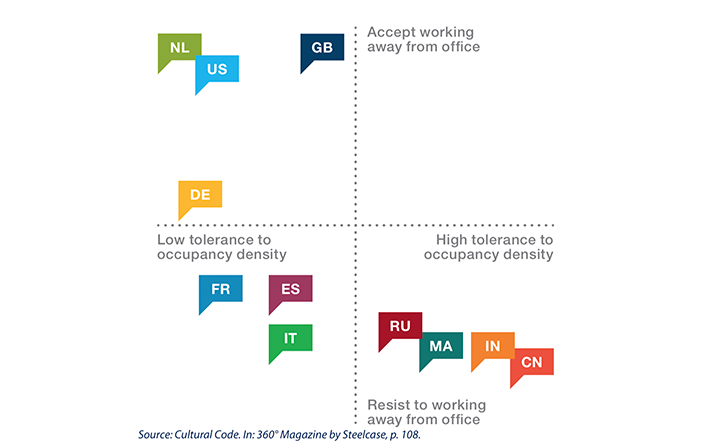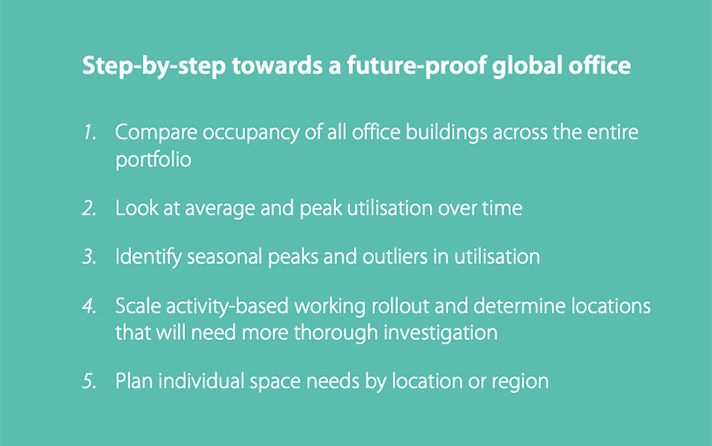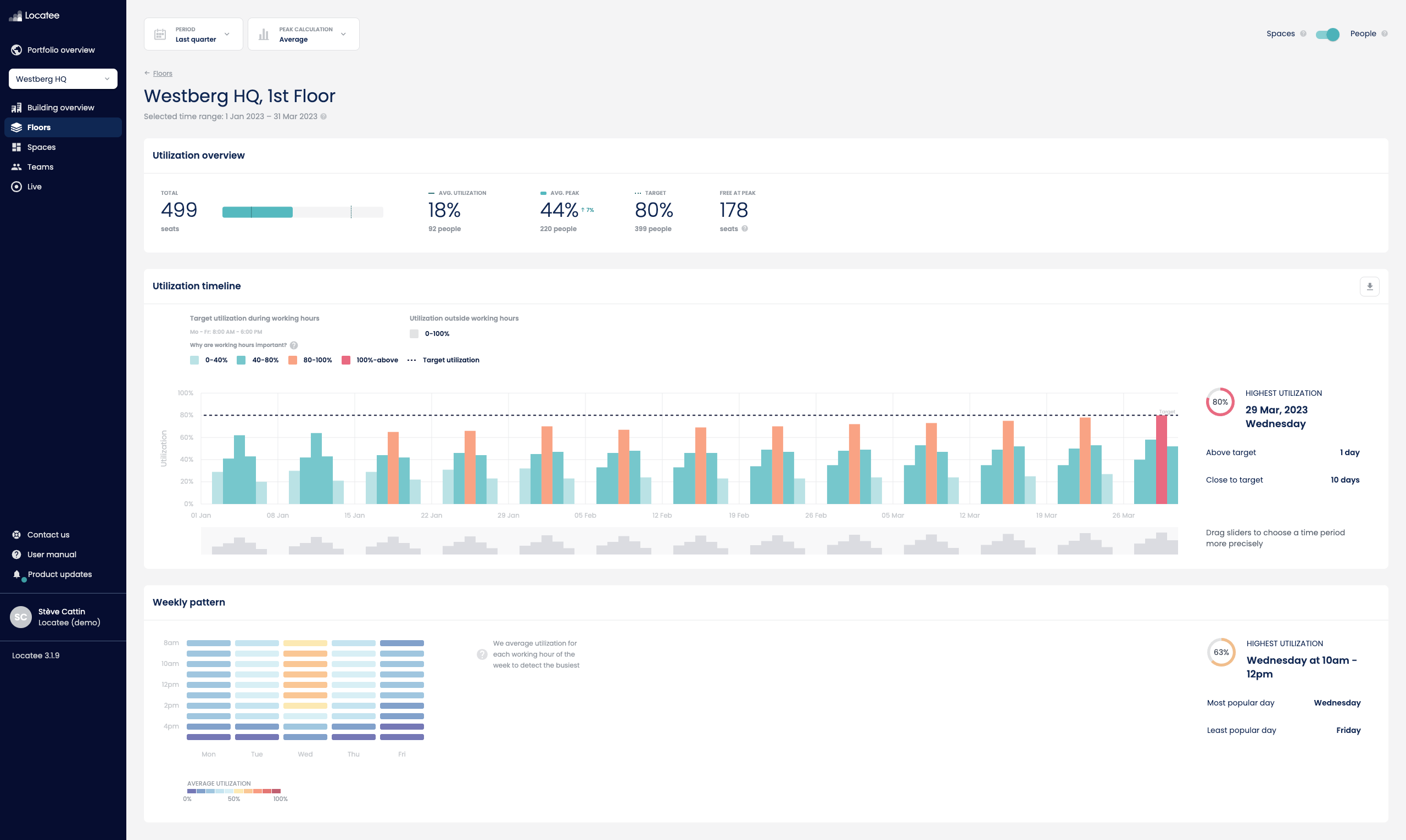The challenge of implementing new workplace strategies
When implementing new workplace strategies, which might include activity-based working, for instance, multinational corporations usually run the concept as a pilot at their headquarters and after a successful test phase, start a global rollout based on initial findings. Approaches like this rarely consider the influence of local culture and diverse behaviours around the world, as prior to modern space occupation data it was simply not possible to consider local differences without tremendous efforts. So, companies would replicate their workplace blueprints with no or little adaptations and by doing so, set up for failure. Common traps include, for example, the elimination of single offices, or the increase of desk density to one common ratio. As a consequence, these workspaces are highly likely not to be accepted, or they will simply not provide an optimal working environment for local employees. Therefore, companies still miss out on a powerful tool to increase team productivity, talent attraction, and employee wellbeing.
The understanding for local preferences
To enhance global integration within the organisation and build a workspace that works around the globe, both mirroring corporate culture and embedding local culture, the understanding of local behaviours is key.
The workplace culture study from Steelcase has shown that two of the key aspects to consider are tolerance to occupancy density and acceptance to work away from the office. In times when globalisation, employee flexibility, and work-life-balance are trending buzzwords of western workplace strategy, one tends to forget that this might not be the norm in other cultures, and tolerance towards occupancy density can vary greatly. In workplaces that are organised more hierarchically, physical presence at the office is generally viewed as a necessity, which implies that acceptance for working away from the office is lower. Consequently, utilisation of the workspace will be higher throughout the week, leading to smaller optimal sharing ratio of workspaces. Additionally, different workplace modules may be required to cater for diverse work patterns and organisational structures.

Steps to take for a future-proof global office
So, a truly future-proof global office calls for a great diversity of settings – all carefully established through a robust process of understanding work practices and behaviours.
Utilisation data can help to understand work patterns in order to identify differences and similarities between distant locations and to discern at a glance where it is necessary to adapt the workspace strategy and to focus attention. A thorough investigation including interviews and workshops with local staff and management builds the foundation for the further process.
Building on existing infrastructure and data sources, Locatee’s Smart Building Platform is highly scalable and can be implemented easily on locations around the globe to study utilisation on a multinational scale. Therefore, corporate real estate can build a rollout plan following a simple step-by-step process.
Let us help you to understand your work patterns and build up your future-proof global office!


 2’
2’




